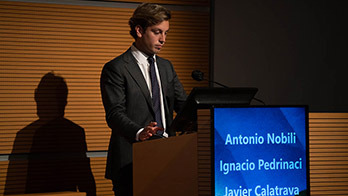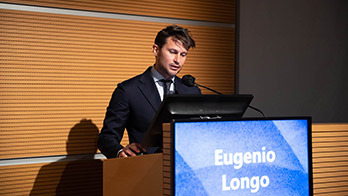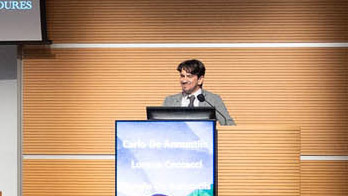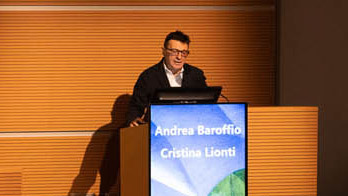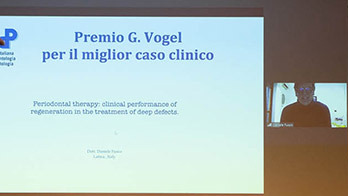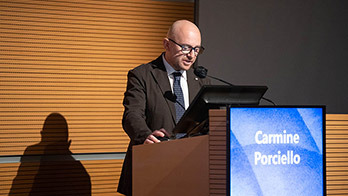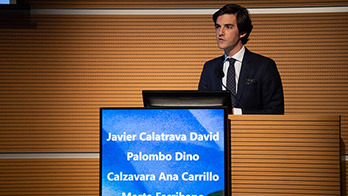Fully digital guided tooth autotransplantation
PREMIO G. VOGEL 2022
Antonio Nobili
A case will be presented, of a systemically healthy and non smoking patient with 41 years old, that came to our service presenting a molar with a hopeless prognosis due to crown fracture on 37 and an available healthy donor tooth on 38.
To present a case with a follow-up of 8 months that belong to a series of 10 clinical cases of dental autotransplantation, in which the effectiveness and complication rates of a fully digitally guided protocol with adjuvant use of enamel-derived proteins (EMD) to replace teeth with impossible prognosis is evaluated.
After proper digital planning, autotransplantation surgery was performed. A completely digitally guided protocol was used for surgery planning and execution, creating an STL file from the patient CT Scan; and then creating an stereolithographic model of the donor tooth and a guided surgery splint to prepare the recipient site. Lastly, enamel matrix derivatives were applied on the root surface of the donor tooth before being placed in the recipient site, where it was splinted to adjacent teeth both buccally and lingually and placed in infraocclusion. Root canal therapy was then performed 4 weeks afterwards and final restorations 3 to 6 months later based on individual need.
Eight month follow up of the case will be presented, in which treatment success was achieved based on clinical, radiographic and patient related outcomes. It can be concluded that tooth autotransplantation supported by a digital protocol can be an adequate treatment to substitute teeth with a hopeless prognosis and has a good perception by patients.
